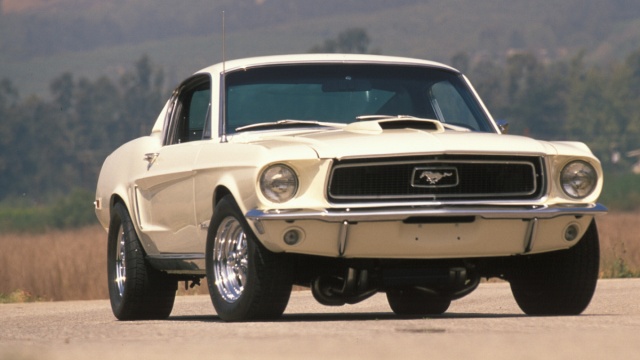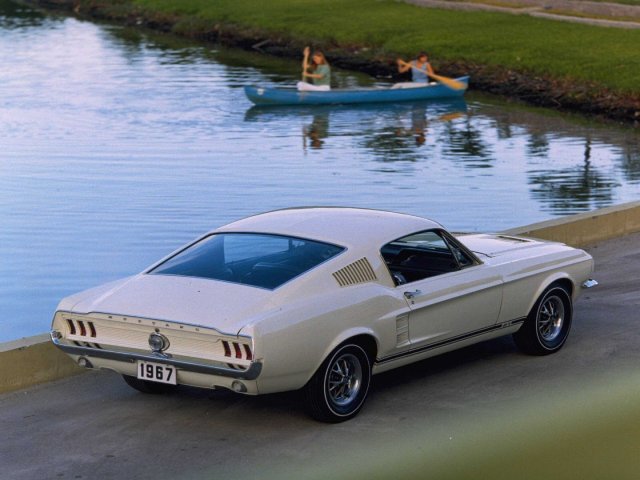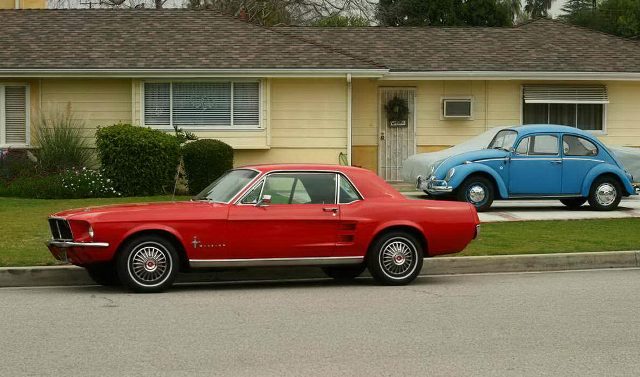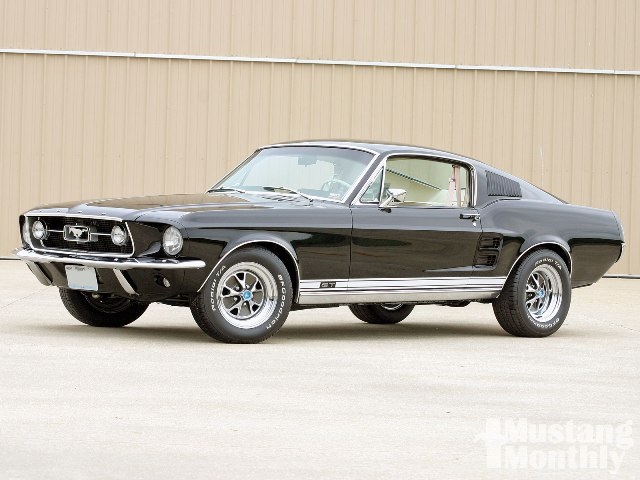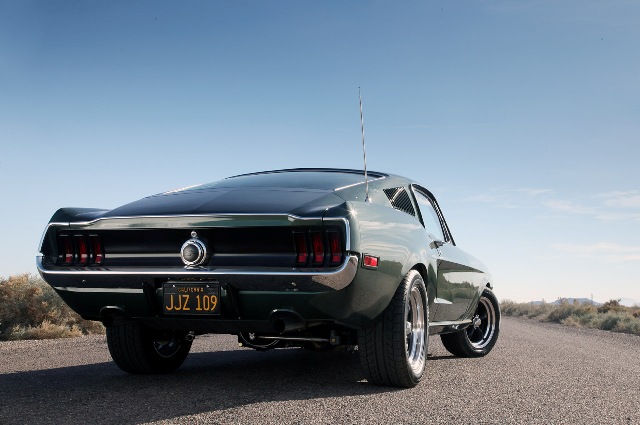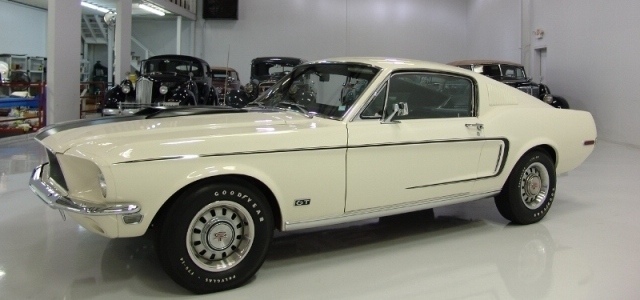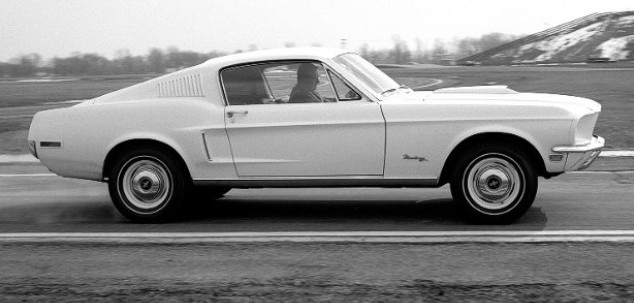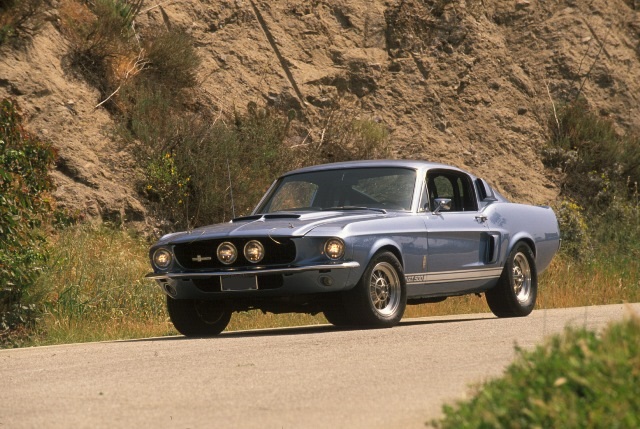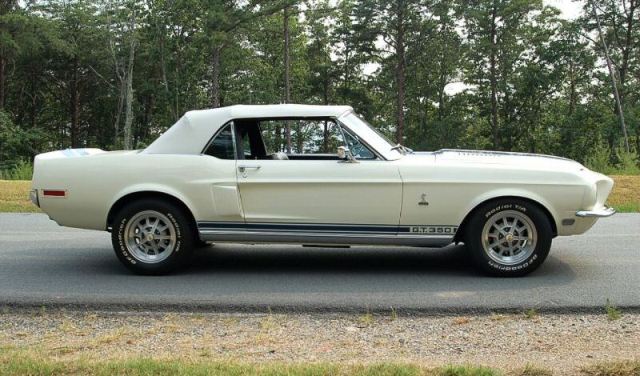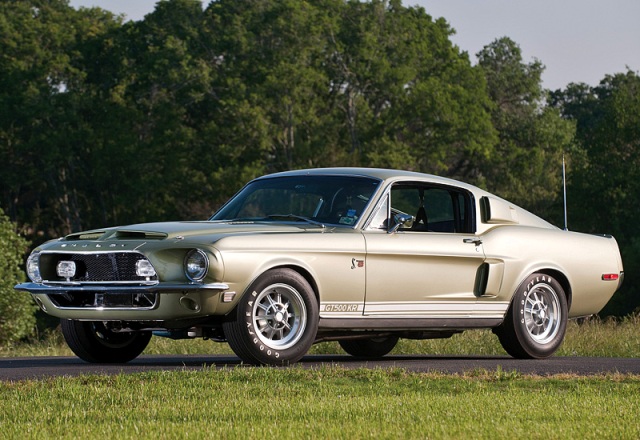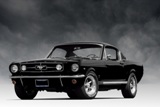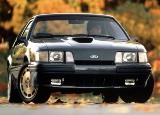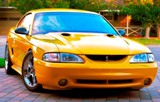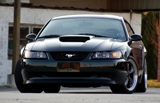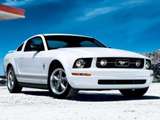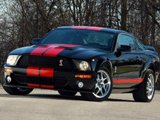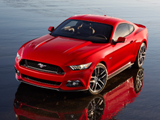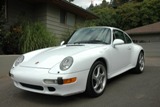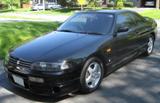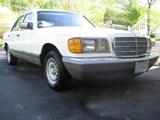Enthusiast's Corner
1967-1968 Ford Mustang: The making of an icon
Written by James Dolan
After selling well over 1-million Mustangs the Ford Motor Company knew that the competition would be working feverishly on a competitor in order to get their share of the Pony car market. Ford correctly predicted that the new Camaro and Firebird from General Motors would be larger, roomier and offer larger, more powerful engines than the current Mustang. Early on in the program there was a desire to install Ford’s big block FE-series engines, specifically the 390. There was a problem however; the Mustang was too small to accept the big block engine. There was only one solution; the Mustang needed to get bigger. For 1967 the Mustang was made three inches wider and two inches longer but the wheelbase remained unchanged. With these changes the Mustang gained the needed real estate in the engine bay to allow the big block FE-engines to slide right in. The down side was the Mustang was now 130 pounds heavier but that extra heft was quickly negated by the more powerful engines.
Ford began work on the larger ’67 Mustang as early as the spring of 1964, coincidently the same time as the original car debuted. Ford stylists were careful if not a bit nervous about restyling the Mustang. They wanted a larger car but didn’t want to lose elements that gave the Mustang its strong identity. In the end the refreshed Mustang was a huge success. Added size gave the car a more aggressive, wider, longer and lower stance; it looked stronger, more powerful and purposeful. The sheet metal changes refined and improved the Mustang without losing its personality. The new car was instantly recognizable as a Mustang yet more mature.
But not everyone was happy with the latest car. Lee Iacocca hated it and the fact that the engineers and stylists messed around with his ‘idea’ of a compact sporty car. He even went so far as to call the ’67 Stang ‘a fat pig’, a little harsh perhaps. Personally I’m not in favor of cars getting larger with each remodel, but I believe the changes were justified at the time; giving the car more appeal, comfort and performance. Besides, the benefits far exceeded the minimal weight gain; the Mustang was still far from being obese. Make no mistake the Mustang was still available as a secretary special with an economical straight-six and just about every comfort and convenience feature you could wish for. While a vast majority of Mustangs were sold with either a six or lower powered V-8; with its extra size and larger engine options the Mustang could now be made into a true pavement scorching ride.
The exterior was not the only area of the Mustang to receive some improvements. With the extra inches gained on the exterior the interior benefitted with increased trunk and rear seat room, a common complaint with the previous car. The instrument panel and dash received a much needed makeover. Finally the Mustang was equipped with a proper gauge cluster with round dials and optional in dash 6,000-rpm tachometer instead of the budget minded instruments from the Falcon. The air conditioning unit was relocated to a more conventional location inside the dash rather then hanging down underneath it like an after thought. For added safety the dash was also padded. New options were available such as a tilt steering column, speed control, an overhead console and a new, improved and luxurious full console with a sliding door in the centre with a storage area behind. The interior of the Mustang was now as refined and mature as the exterior.
Under the hood the Mustang soldiered on with the 200-ci six and the 289 V-8’s in various states of tune, including the hot 289 Hi-Po, which did not last very long and was dropped mid-year. Not long into production the Hi-Po was replaced with the now legendary 302 Challenger V-8 with a four-barrel carburetor and 230-horsepower on tap.
But the big news for 1967 was the introduction of Ford’s 390 FE-series big-block engine into the Mustang. The whole premise for increasing the size of the Mustang was to allow installation the big-block engines into the Pony car. Rated at 320-horsepower the four-barrel 390-ci FE-engine was ‘the’ engine for the performance enthusiast. Not only was this engine a powerhouse, it was also reasonably priced. As a matter of fact the 390 at $263.71 was $169.84 cheaper than the 289 Hi-Po! Combined with the 390 FE-engine, four-speed transmission and GT package that included heavy duty shocks; larger 5-spoke wheels; stiffer springs; fog lights; thicker roll bar up front and power front disc brakes, a Mustang was hard to beat both on the street and value wise.
For added agility a Competition Handling Package could be added to the GT or the automatic GTA and it included big 15x6 wheels; an even larger roll bar in the front; a 3.25:1 limited-slip differential; a quicker 16:1 steering gear and Gabriel adjustable shocks, but this is now a rare find since it was an expensive option. Technically a 427ci 390-horsepower FE-series big-block was available in early 1968 but few, if any were ever ordered and the engine was discontinued by December 1967.
It was more than just horsepower and dollars and cents that made enthusiasts heart ache for a 390 GT Mustang. The Steve McQueen movie Bullitt and its 12-minute chase scene with a Highland green 1968 Mustang 390 GT with a four-speed has forever etched the 390-ci FE-series engine into the minds of car lovers as the ultimate engine to have in a Mustang. The car alone was cool but combined with McQueen’s driving abilities and the thunderous sounds of the 390 V-8, in what is now perhaps the most famous chase scene in movie history forever cemented the lust for that very car in just about every car enthusiast including myself. Since the first time I saw that move years ago I have coveted that car. But the 390 was just one of the performance engine options available.
1968 Mustang 428 Cobra Jet
A Mustang with a 390 might have been fast and had the ability to smoke its tires into oblivion; it wasn’t quite able to keep up with the most powerful GM pony cars. The big-block Camaro and Firebird had the advantage when it came horsepower and acceleration and although the Mustang handily outsold those cars from G.M., it didn’t have the bragging rights that are so important to most enthusiasts. Tired of being out gunned, Rhode Island Ford dealer Bob Tasca took matters into his own hands and built one of the fastest, most brutal Mustangs of all time. Combining existing 390, 427 and 428 FE-series V-8 parts and dropping this monster into the Mustang, Tasca was able to create a frighteningly fast car capable for 13 second quarter-mile times. This colossal power plant consisted of a 428 block as the base with 10.6:1 pistons attached to Police Interceptor rods inside. A 390 GT cam was used along with 427 low-riser heads. And to top everything off was a massive 735-cfm Holley four-barrel carburetor and low-restriction dual exhaust. This amalgamation of parts made serious power and was enough to put the Mustang ahead of any production car at the time. Tasca was well respected at Ford and on his next trip to Detroit Bob proposed the idea of a regular production 428 Mustang to Ford, and they listened. Ford agreed to produce the hyper Mustang and the 428 Cobra Jet V-8 was rolled out in April 1968..
When ordered the 428 Cobra Jet Mustang was more than just an engine, it was a complete package. Many optional performance parts were standard, including the GT Equipment Group with all its goodies. Ford’s famous 9-inch rear end with staggered shocks, power front disc brakes, an 8,000-rpm tachometer on manual transmission cars, braced strut towers and a Ram-Air hood were all part of the package. The engine was advertised at a ridiculously underrated 335-horsepower. Perhaps the reasoning was not to steal some of the thunder from the Shelby’s or it could have been for insurance reasons..
Whatever the reasoning it really doesn’t matter because the 428 Cobra Jet Mustang was the fastest Mustang ever produced and likely the fastest production car ever built at the time, faster than the vaunted Shelby’s even. Amazingly Ford sold 2,827 fastback, coupe and convertible 428CJ Mustangs in ’68, a large number considering it was introduced so late in the production run. Single handedly the 428 CJ forever transformed the image of the Mustang from sporty car to a king of the hill muscle car over night.
1967-1968 Shelby Cobra GT350/GT500 Mustangs
Shelby continued to produce the GT ‘Cobra’ Mustang in 1967 but this year the GT350 was offered along side the new GT500. The GT350 continued on with the 306-horsepower 289 V-8 from the previous GT350 from ’65 and ’66. But the big news was the introduction of the GT500 with its 428-ci FE-series engine being fed by not one but two Holley four-barrel carburetors producing a health 355-horspower.
Outside the Shelby’s were treated to more distinctive styling to differentiate them from garden variety Mustangs. There was a fiberglass nose piece that extended the overall length of the car 3-inches over the standard Mustang. Twin driving lights were mounted to a deep recessed grill and a fiberglass valance resided below the bumper with a large cut out to allow for better cooling. Fiberglass was also used for the hood which had wide twin snorkel scoop and was extended to accommodate the new nose. At the rear a fiberglass deck lid with an incorporated ducktail spoiler was used. Fiberglass caps were attached to the top each quarter panel to better incorporate the spoiler into the bodywork. Mercury Cougar taillights were mounted to give the Shelby Mustang a distinctive appearance at the rear end. Functional upper and lower rear quarter side scoops extracted air out of the cabin in the case of the upper scoops and the lower scoops let cooling air in for the rear brakes.
Like the Mustang the new Shelby ‘Cobra’ Mustangs were made to be tamer and more comfortable than the last generation. As such, aggressive suspension tuning was out of the question; however the Shelby’s weren’t exactly bad handling cars either. Standard suspension was the Competition Handling Package from the regular Mustang with the only difference being that the shock towers were tied together with a brace and mag-style wheel covers from the Thunderbird were standard. Optional were 15x7 Kelsey-Hayes MagStar wheels that were superseded by cast-aluminum 10-spoke wheels later on.
Nine-teen sixty-seven was the final year that Shelby produced Mustangs at his own facility. For 1968 production was transferred to A.O. Smith works in Livonia, Michigan and was now under the full control of the Ford Motor Company. Like Iacocca, Shelby had become disenfranchised with the direction of the Mustang and being told by Ford to make the car less of a focused performance car and more comfortable didn’t sit well with him. Interestingly, just as with the standard Mustang, the ’67 and ’68 Shelby’s are the most coveted Shelby Mustangs by collectors.
Changes for the 1968 Shelby Mustangs were relatively minor. The cars were renamed Shelby Cobra GT350/GT500. A louvered hood with leading–edge air inlets, the addition of mandatory side marker lights and sequential taillights from the ’65 Thunderbird replacing the units from the cougar were the only exterior changes for 1968. For the first time a convertible Shelby Mustang was officially offered for 1968 moving the Shelby even closer to a tame cruiser rather than a street bruiser. It didn’t help that the 306-horsepower 289 was dropped in favor of the 302-ci with only 250-horsepower. This was another sign that the Shelby Mustang was getting soft in some respects, but the good times weren’t completely over.
Ford replaced the dual carb 428-ci engine with the 360-horsepower Police Interceptor 428-ci V-8 giving the GT500 model an additional five horsepower from the year before. Mid-year brought about a major addition to the Shelby Mustang line-up. For the ultimate kick in the butt performance the immensely powerful 428 Cobra Jet 428 engine was made available in the GT500. Although the advertised rating of 335-horsepower may seem to be a down grade compared to the previous 428’s, the Cobra Jet was in fact a vastly superior, more powerful engine that was greatly underrated. The new engine necessitated a name change, the GT500 was now known as the GT500KR. The ‘KR’ stood for King of the Road and went a long way in keeping the Shelby Cobra Mustangs at the top of their game.
While Ford and Shelby were busy selling pumped up Mustangs for 1967 and ’68, behind the scene Ford’s staff was working hard designing a Mustang with even more size and power.
Click here to continue reading on the next page about the awesome 1969 and 1970 Mustangs...
Most Popular Articles

Japanese Nostalgic Vehicles: The next trend in classic cars
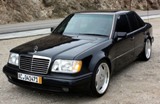
Five Sports Sedan's I'd Love to Own
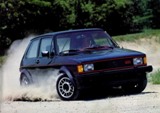
Hot Hatchbacks From the 1980's

Volvo 200 Series: An Unappriciated Classic
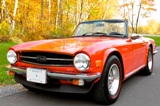
Triumph TR-6: Music to Anyone's Ears
Fifty Years of Mustang
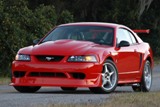
1999-2001 Ford Mustang SVT Cobra
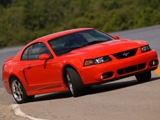
2003-2004 Ford Mustang SVT Cobra
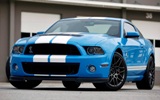
2010-2014 Ford Mustang Shelby GT500
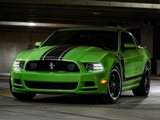
2012-2013 Ford Mustang Boss 302
Driven

Volvo 200 Series: An Unappriciated Classic

Triumph TR-6: Music to Anyone's Ears
1993 Nissan Skyline GT-s and GT-R Coupe

